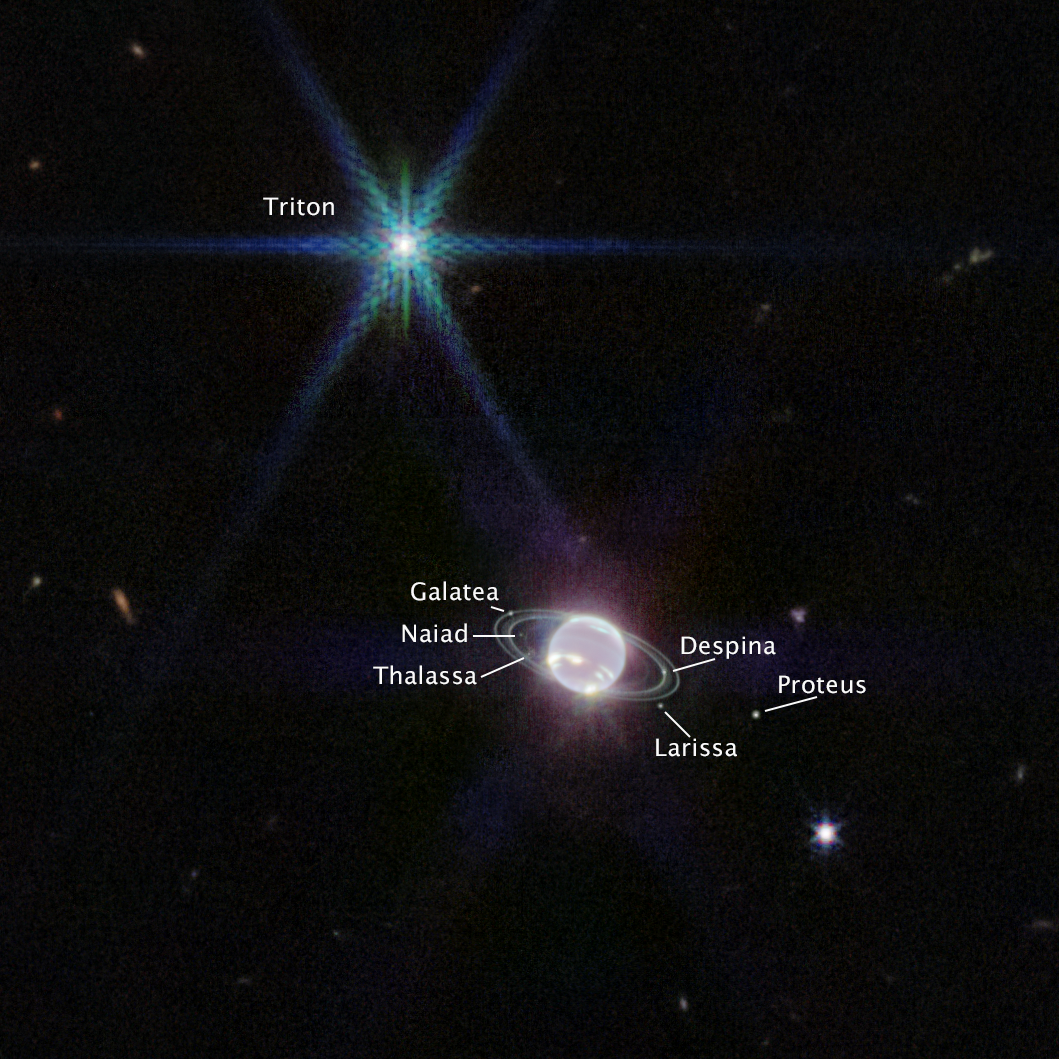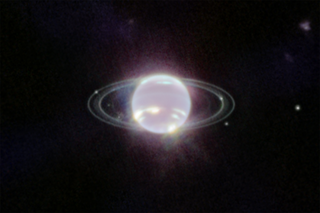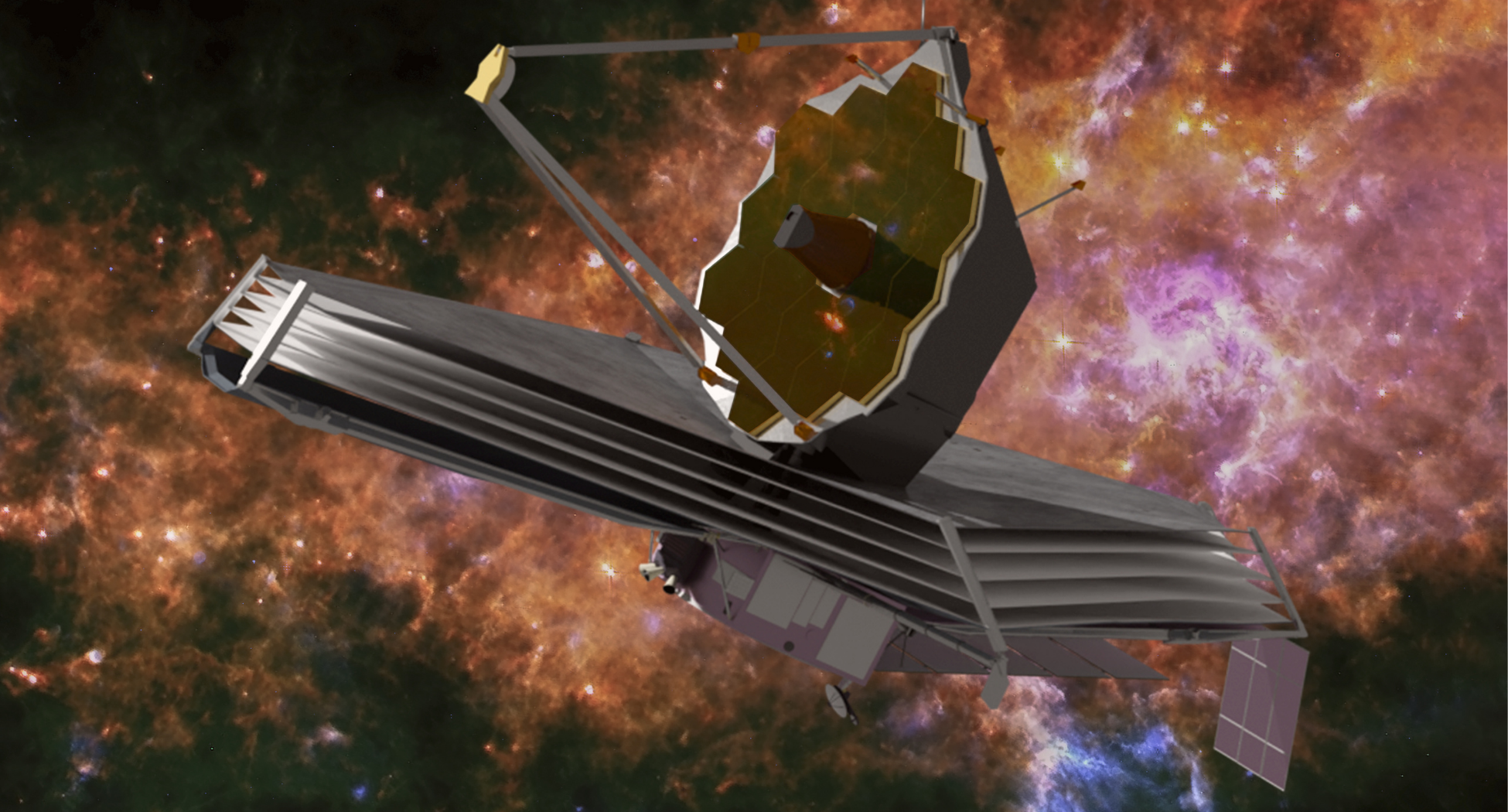James Webb Captures the Clearest View of Neptune’s Rings

NASA’s James Webb Space Telescope has captured the first image of Neptune’s rings with the clearest view in more than 30 years, exposing the ice-giant under the sun.
NASA says the clarity of the planet’s rings, some of which have not been seen since NASA’s Voyager 2 became the first spacecraft to observe Neptune during its flyby in 1989, is what stands out most in Webb’s newest image. The Webb image clearly shows Neptune’s fainter dust bands in addition to many bright, narrow rings.
According to Heidi Hammel, a Neptune system expert and interdisciplinary scientist at Webb, it has been three decades since astronomers last observed these faint, dusty rings, and this is the first time they have seen them in the infrared. These extremely faint rings were discovered so close to Neptune because of the Webb’s extraordinarily precise and consistent image quality.
Since it was spotted in 1846, Neptune has intrigued scientists. Neptune orbits in the distant, dark area of the outer solar system, 30 times farther from the Sun than Earth. High noon on Neptune is similar to a dim twilight on Earth because of how small and pale the Sun appears from such a great distance away.
The interior chemical structure of this planet classifies it as an ice giant. Neptune is considerably richer in elements heavier than hydrogen and helium than the gas giants Jupiter and Saturn. Small amounts of gaseous methane enable Neptune to appear distinctively blue in Hubble Space Telescope images at visible wavelengths, which is easily visible.
Neptune’s New Webb Image

Webb’s Near-Infrared Camera (NIRCam) images objects in the near-infrared range from 0.6 to 5 microns, so Neptune does not appear blue to Webb. In fact, the methane gas so strongly absorbs red and infrared light that the planet is quite dark at these near-infrared wavelengths, except where high-altitude clouds are present. Such methane-ice clouds are prominent as bright streaks and spots, which reflect sunlight before it is absorbed by methane gas.
Over the years, images from other observatories, including the W.M. Keck Observatory and the Hubble Space Telescope, have recorded these rapidly changing cloud structures.
A more distinct visual sign of the global atmospheric circulation that drives Neptune’s winds and storms could be a thin line of brightness circling the planet’s equator. At the equator, the atmosphere descends and warms, making it lighter at infrared wavelengths than the nearby, cooler gases.
Neptune’s northern pole, at the top of this image, is just out of view for astronomers due to its 164-year orbit, but the Webb images suggest an unusual brightness there. Webb’s image clearly shows a previously known vortex around the southern pole, but this is the first time Webb has shown a continuous band of high-latitude clouds surrounding it.
Webb also captured seven of the 14 known moons of Neptune. A very bright point of light with the distinctive diffraction spikes visible in many of Webb’s photographs dominates this Webb image of Neptune, but this item is not a star. This is Triton, the huge and peculiar moon of Neptune.
Also Read: Webb’s Infrared vs the Distant Universe
According to NASA, Triton reflects approximately 70% of the sunlight that it absorbs thanks to a frozen sheen of condensed nitrogen covering it. Because methane absorbs at these near-infrared wavelengths, it outshines Neptune by a substantial margin in this image. Triton’s peculiar retrograde orbit around Neptune has led astronomers to speculate that this moon was once a Kuiper belt object that was gravitationally grabbed by Neptune. In the upcoming year, more Webb studies of Triton and Neptune are planned.
The best space science observatory in the world is the James Webb Space Telescope. Astronomers have expected the Webb to solve mysteries in our solar system, look beyond to distant worlds around other stars, and probe the mysterious structures and origins of our universe and our place in it.
The James Webb Space Telescope is a joint project of NASA, the European Space Agency, and the Canadian Space Agency.
Auto Amazon Links: No products found.


